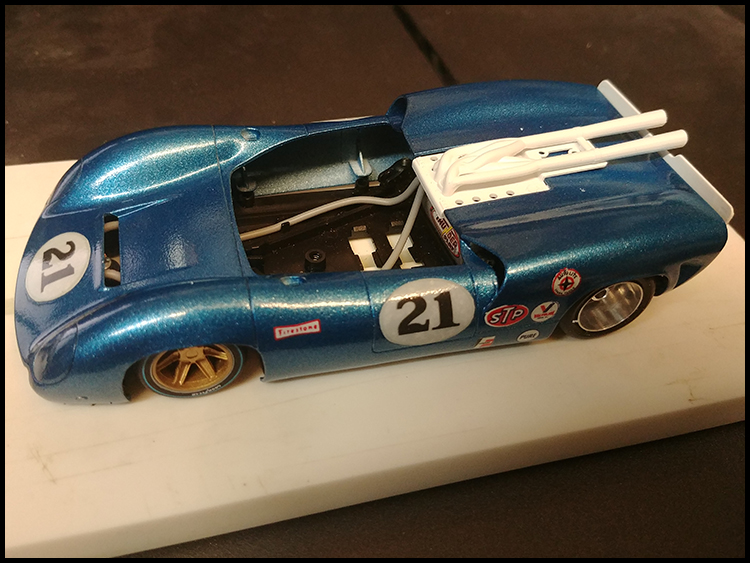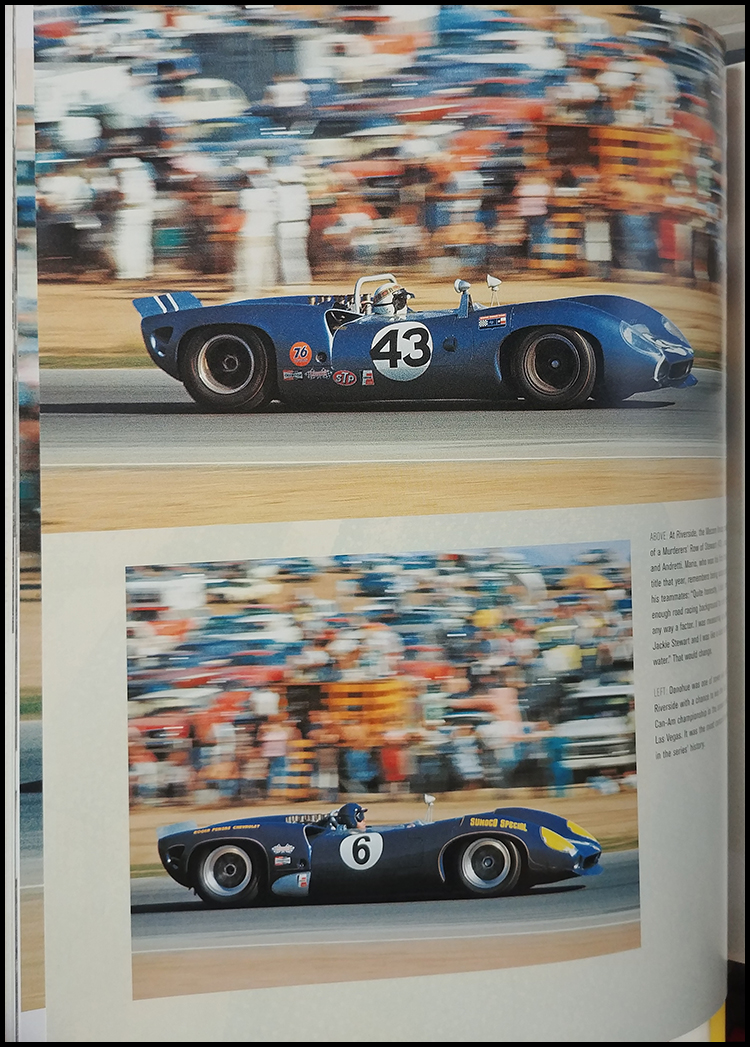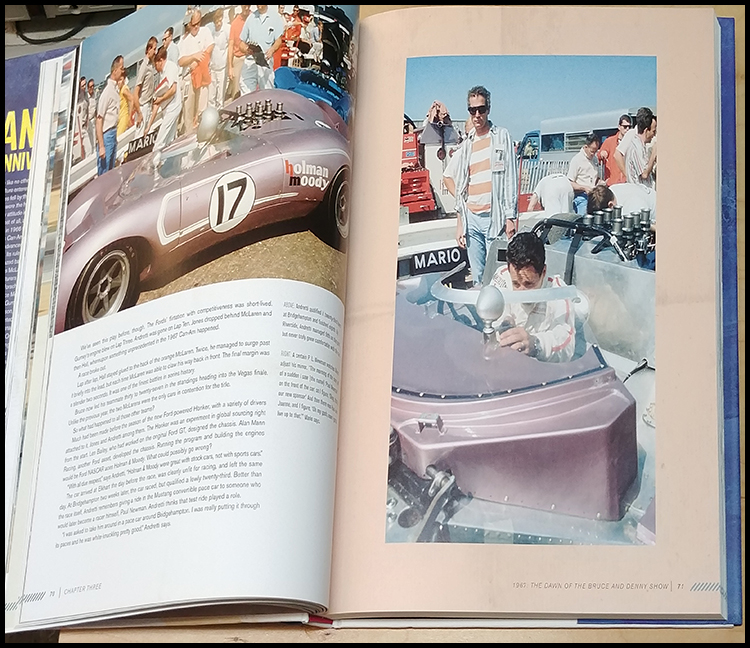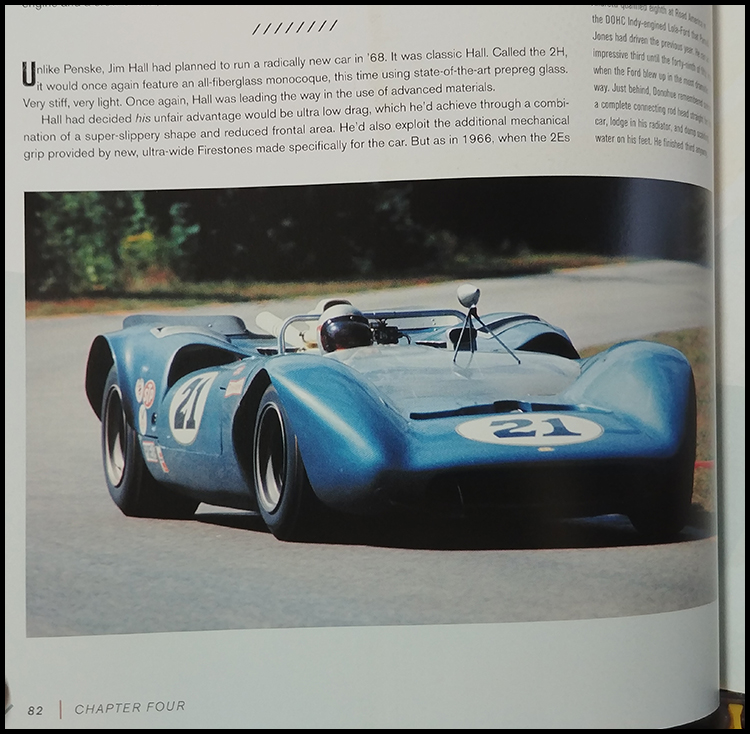Forum Replies Created
-
AuthorPosts
-
Marty
I have trued both the stock, treaded rear tires and the standard slick rear tires with no issue. I was surprised to hear that you had trouble with the stock fronts. In my cars, the stock fronts were already pretty round and I have not noticed any issue or bouncing of the front end. I have not yet tried truing the stock fronts.
The Thunderslot McLarens would be welcome in the series, pending a check of the cars for differences. If there is a difference in width, we would need to have a track spec. I was hoping to get by without one, just using the rule about extending past the body. I have noticed that the roadster Lola body may be slightly narrower in the rear than the coupe. In my swapping of chassis between the coupe and the roadster, I did not adjust the chassis when I went back and forth. The roadster was just slightly faster, a factor that may be mitigated if it can has a slightly narrower rear track.
Do the NSRs fit the wheels OK? What is the part number? If the Thunderslot hard tires are so bad, it looks like it it will either be the NSRs or the stock treaded tires. Anyone else tried the optional tires?
I will extend the date for final Thunderslot rules to this weekend.
This is the car that I will be running:
I like their attitude! And I am sure everyone will comply.
Russell
I agree with the point Randy made about post-race inspection. I am not opposed to post-race inspection. I am opposed to post-race disqualification. A post-race inspection that would give a heads-up that the car would not pass inspection for the next race would be helpful.
Marty
First of all, as I said previously, except for the post-race inspection (a rule we have never used and, I believe, a bad precedent moving forward), I do not think any of the rules need changing. That horse has left the barn, and there is no point now.
As for the tire diameter and track, you missed the point I was making about the tire diameter and track. Of course, tire diameter is important; that is a given. In addition to the center of gravity, it also has a big effect on downforce. My point was why the specific tire diameter was selected. Any spec would have worked. Everyone would have worked to that spec and it would have been a fair and level playing (racing) field. If a diameter of 19.25mm had been selected, those with the later, smaller tire would not have to buy and true new tires. Those with the original tire would have had to get new tires in any case. With an untrued diameter of 19.65mm, a 19.40mm spec requires great care in truing the tires.
Again, with the track, it is clearly understood that a wider track is better; everyone knows that. My points about the track are twofold:
First, it is a stock spec. The car should have the original parts, slight production variances should be allowed. Barring, of course, an issue like the tires where, perhaps, a different axle spacer was supplied. With an otherwise stock car, like mine, that was slightly out of spec, it is difficult to machine the spacer to a smaller width, while maintaining a smooth and square edge on the spacer.
Second, the rule we have traditionally used is that the wheel/tire should not extend beyond the body when viewed from above. That would have worked fine here, especially with identical bodies. Also, again, going forward, are we going to change the track specs for future series? If we have a track spec here, are we going to have a track spec for Group C? NSR Rally? For accurate measurement, we would need a template for each series, if that is the case. Is that what we are going to do? The only time that I think we need a track spec is if there are significant variances in body widths between car models.
My issue now is whether how the way specs for this were created will be applied to future series.
Still looking forward to the race today.
Russell
Comments about existing rules:
The rules were posted a month before the race for all to see and comment on. It was my own fault, because I was so busy, not to have read the rules sooner. I set up the car at literally the last minute, and did not check it against the rules.
I understand the issue with later production cars having smaller diameter front tires and the need to change the rules accordingly. I just think that, with an untrued diameter of 19.65mm, a spec of 19.4mm does not leave much room for truing and a smaller diameter spec would have worked just as well, with everyone setting up to that spec. As Marty stated, he took measurements after the race to check everyone’s diameter and used those results to decide what the new spec should be. What was not reflected in those measurements was which cars had the original tires and which cars had the newer, lowered tires. Also, there may well have been an issue with warm tires recording a larger diameter. My car was listed at 19.46mm. When I measured it this week, it was 19.34. This was not an incorrect caliper measurement. When the caliper was set at 19.4mm there was a clear gap to the tire. I will check my caliper against the template tomorrow to see if there is caliper error. I just think a smaller spec, that everyone would have set to, would have been better. At this point, as everyone has bought new tires to comply, I do not think it would be fair to change the spec. Everyone will just need to use extreme care when truing.
I do not know why there is a spec for track. To my memory, the only previous race where we had a track spec was when there was a particular slot car with a much wider body and the track was specified to address this. In other races,the rule has always been that the tire/wheel must not project beyond the body when viewed from above and the rule has worked well. With identical bodies this rule could have worked here. Again, now that everyone has (hopefully) adjusted their chassis to comply with the spec, I do not think the rule should be changed.
I am opposed to the spec about tire diameter minimum after the race. This is a spec we have never used and I think it sets a bad precedent. To say that the racer should account for tire wear after the race and set up their tires with that in mind is too much to ask. There are too many variables. What if it is a hot day and there is more tire wear? I think if the car is legal before the race, with the proper tire, wheel, diameter, etc. it should not be checked after the race.
As I said, I understand the need for rules and strict adherence to those rules, especially with a spec series where small variations can make a difference. With the exception of the post-race spec, I am satisfied with the rules as is and am looking forward to racing. I just think, in the future, a little more leeway in setting up those specs would have been better.
See everyone tomorrow!
Russell
OK.
Marty
Although it does have some earlier Can-Am photos, this is probably not the best book to see a variety of liveries. Presumably, you are looking for Lola liveries. I have just ordered a couple of books–the Dave Friedman Lola book and Lola T70, The Racing History and Individual chassis record. These should be better bets for Lola T70s.
The Can-Am 50th Anniversary book is more of a broad scattering of great images throughout the history of the Can-Am and related races. It has one of my favorite Jim Hall images, with Pete Biro holding his camera in front of the steering wheel, shooting Jim Hall at speed.
The top picture is Jackie Stewart:
Here is the Honker:
This is the Mario Andretti car that I am probably going to make for the ThunderSlot series:
How about Roger Penske in a Chaparral:
I also will be running the Red coupe #2 ill have to change the number.
Jordan will be running Dana # 52
I trued the front tires of the ThunderSlot carefully and discovered three things. The front axle is NOT knurled, so the plastic wheels side off without damage. The plastic wheels have inserts so I could put the tire truer axle through the wheels. I trued very carefully, test driving twice, still hopping after first true. Then discovered that the fronts were true but soft, very unlike our usual hard zero grips. I did not run laps after the last true, but expect real good times. This is also the car that lost a front axle height adjustment grub and I am still waiting for those parts.
I would like to call Daytona 24 hours 1969 (#8) as my car for the Thunderslot series.
I have changed the number on my blue and silver Revo Slot to 68 with red numbers. Now it also has blue wheels in front and silver in rear to match the body colors.
I do not like the idea of truing the front tires on stock plastic wheels and force fit axles. My roadster seems to bounce on the un-trued fronts. Marty tells me a very light touch on the truer will preserve the stock tire and wheel, but will it preserve the force fit on the axle?
I have had the #30 Gurney roadster for almost 4 months. I would change the number to 48 if I must to satisfy the “dibs” idea, but only reluctantly. It may be too late to really call dibs. (Letting Slot.it McLarens in the series would make more cars available;)
11 volts seems plenty on this light car.
Preliminary Thunderslot Series Rules
Guys, I apologize because I have been so busy that I have not had time to post rules for the Thunderslot series. Mark has taken the time to produce a set of rules and I have discussed them with him. I will post these preliminary rules shortly, with the goal of having final rules by Feb. 1. That will give everyone a couple of months to get their cars ready for the series.
My thoughts are to keep the cars as stock as possible, with two goals in mind: a level playing field and to keep the costs down. Any changes from stock that make the cars faster, as, say, independent front axles, will mean everyone will need to make the changes to be competitive. Rule changes from stock would primarily be due to a problem with stock parts–erratic behavior, failures, etc.–and not just to make the cars faster. To that end I propose stock chassis, stock anglewinder motor pod, stock guide, stock front wheels, stock motor, gears, axles, etc. The low grip front tires may be OK and either the trued original treaded rear tires or the optional slicks would be allowed. Probably, the optional larger diameter rear wheels may be allowed, due to concern that worn tires on the original wheels may mean that the chassis bottoms out on the track. Personally, I will try the original wheels to see if the tires will last.
I do not see a need for tire diameter specs in this series. With the adjustable front axle height, it is not necessary on the front, and the rears are self-limiting, due to low clearance below the chassis. Track would be limited by not exceeding the width of the body.
Added weight, above the chassis would be allowed. I think installing grub screws in the provided chassis holes on the edge, to control float to the body, would be OK.
Dibs should be called on car liveries. For duplicate liveries, car numbers must be changed. As I was the first to buy one of these cars, I would like to call dibs on the red Lola coupe #2. However, if I decide to run a roadster, this car livery would be available. If more cars become available, they would also be allowed, pending any production changes, different from the original cars. If anyone notices any changes between any of the existing or upcoming cars, such as width, motor, wheels, weight, etc., please bring it to my attention as soon as possible.
I am also considering running the series at 12 volts. I did some brief running with my cars on Saturday, while running the Revo Slot car, and the cars were controllable and very quick. I would like to hear what everyone thinks about this.
If anyone has input as to the rules, please post to this forum. Reasonable rules changes would be considered.
Thanks
Russell
More thoughts on the Thunderslot series:
The “white kit” comes with enough parts to build several versions of the Lola T70 Spyder:
There are two windshields, two dashboards, two driver heads, four roll bars and three engine options. There is a Chevy engine with vertical intakes, a cross-ram block as run by Donahue/Penske, and a Ford Indy dual overhead cam engine with bundle-of-snakes exhaust over the rear deck. Note that the engine supplied with the Gurney #30 car is incorrect as it has Chevrolet valve covers rather than the Gurney-Weslake heads on a small block Ford engine. Right now I am thinking that I am going to race a Spyder, set up as the #21 car with the Ford dual overhead cam engine as raced by Parnelli Jones and Mario Andretti. Presumably, this car, as well as others, will as some point be available from Thunderslot.
In comparing the coupes and spyders, my red coupe weighs 63.1 grams and the #30 Gurney spyder weighs 58.5 grams. The front/rear weight distribution between the two cars is within one percentage point. It remains to be seen how the two cars compare on the track. The spyder is a good bit lighter but the coupe may have a slightly higher center of gravity which may help weight transfer to the outside wheel for more cornering grip.
-
AuthorPosts







